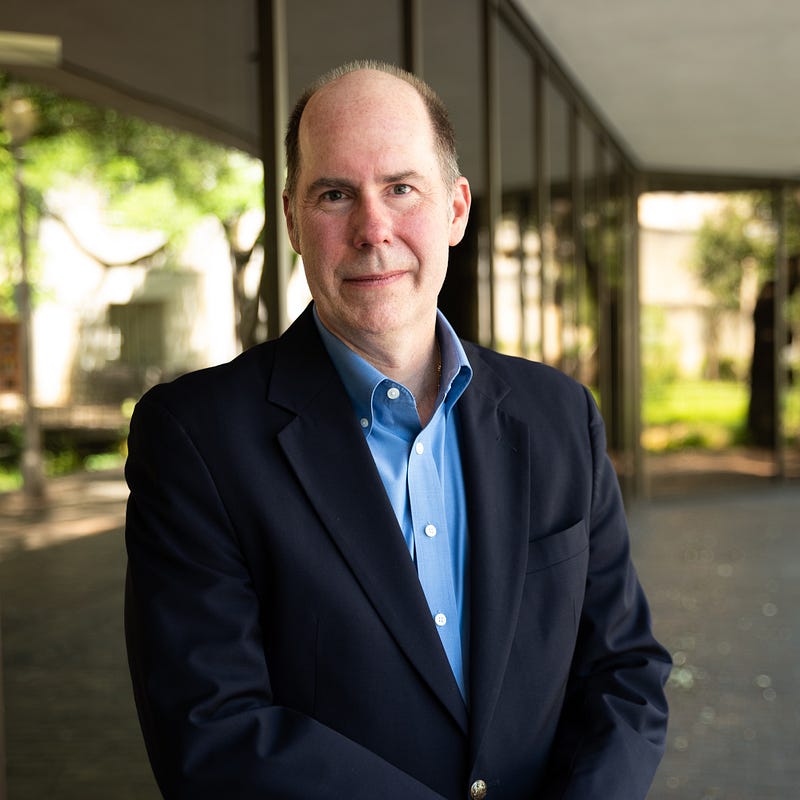America’s Ailing Healthcare System Needs a Transfusion of Ideas and Technology
The country’s healthcare delivery system remains stuck in the past. Will new solutions come from a team of experts skilled in business operations and management?

Ed Anderson was a software engineer in the 1990s. Today, he’s a university professor researching healthcare’s use of electronic data. “I can still dig into today’s healthcare software programs and understand the basic architecture,” he asserts. “And this is not a good thing.”
Anderson has studied the rapid advancements made in other areas of technology — think iPhone applications — and wonders why health tech remains stuck in the past, despite the fact that the U.S. spends more per person on healthcare than other developed countries.
“We’re 20 years out of date,” Anderson says. “No other industry in America could compete with a lag that pronounced, and this is a profession that means the difference between life and death.”
Treating the Systemic Causes of Health’s Decline
Anderson is not alone in his concerns. While medical professionals are acutely aware of the problem, many other professions are beginning to step forward with unique perspectives on how to address the need. As director of the Texas McCombs Healthcare Innovation Initiative at The University of Texas at Austin, he leads a focus on innovation, entrepreneurship, information management, and operational and organizational systems to the issues and challenges in healthcare.

“We’re trying to fertilize cross-research,” he explains. Roughly 10 to 20 units throughout the university are doing healthcare delivery research of one type or another. It’s not just the medical school: faculty and graduate students are coming together from the school of Nursing, Architecture, Liberal Arts, Communication, Engineering, and so on.
Anderson’s team is building a healthcare advisory committee, hosted at Texas McCombs, composed of industry members from the community. That includes local physicians and hospitals with the Seton Family of Hospitals — Dell Seton, Seton Medical Center, and Dell Children’s — and various community clinics, mostly for the underserved.
Expanding the Definition of a Healthcare Professional
Down the hall from Anderson, Diwakar Gupta is using operations research and data analytics to improve operating room staffing and scheduling, design advanced market contracts to incentivize vaccine and drug manufacturing for developing countries, and studying system-design parameters that contribute to the under-procurement and under-utilization of deceased-donor organs such as kidneys.
His colleague Operations Management Professor Doug Morrice is working to create integrated practice units at Dell Medical School to pilot better clinical treatment in the future for people who are suffering, for example, from joint problems. “If you have a bad knee or hip, you’d have physical therapy, orthopedic surgeons, and a number of other specialists on hand,” says Morrice. “It becomes one-stop care, but how do you make that economically feasible? It turns out to be a challenge and an opportunity.”
Other colleagues applying business analysis and analytics to healthcare delivery include IROM associate professors James Scott, who is looking at how fatigue affects the quality of care, and Maytal Saar-Tsechansky, who employs machine learning techniques to improve healthcare and the management of care. Her research developed machine learning methods to improve the prediction of the onset of chronic diseases (such as Type II diabetes), and to anticipate poor healthcare outcomes.
There are also complex factors of human interaction among medical professionals, being studied by Anderson’s peers in the management field. Ethan Burris, associate professsor in Management, has been conducting research on nurses speaking up in hospitals because there’s a tendency to defer to physicians when maybe they shouldn’t. Shefali Patil, assistant professor in Management, focuses on how decision making among medical professionals, and patient care in general, is affected by public scrutiny and public misunderstandings of their roles and duties.
Remembering That Physicians and Patients are Human
Many of these academics are applying skills developed and tested on machine automation, assembly lines, and computer code. How applicable are these ideas and systems to the real world of treating human disease and injury? Anderson is exploring that question in collaboration with Dell Seton Medical Center in Austin. “I used to do process improvement for Ford back in the early ’90s, and I’ve taught it for years,” he says. He finds the challenges of healthcare more complicated and puzzling.
“Patients are not widgets; they’re not standardized,” he explains. “Physicians aren’t machines, and they have to customize healthcare to their patients with different healthcare histories, comorbidities, and expectations.”
Anderson knows that clinicians aren’t taught to think of processes because their primary focus is on the patient at hand, as it should be. Even so, they can be trained to understand the overall treatment activities and be aware of similarities between patients and the possibilities for improved care by making a few simple changes in workflow. “Many medical professionals are astounded at how much they can improve patient care through simple process improvement,” he says.
Anderson isn’t hoping for a miracle. “Let’s just move healthcare technology and operations management into the same decade as the advances we see in AI and Big Data.”
Healthcare entities interested in the Healthcare Innovation Initiative should contact Brynn Cavanaugh or Roanna Flowers. The advisory council utilizes alumni and corporate partner relationships to identify internship and full-time career opportunities for students, develop dedicated programming and curriculum, and strengthen the healthcare industry network. Represented companies include Johnson and Johnson, WellMed Medical Management, and St. David’s Heart Hospital.
About this Post
Share:


